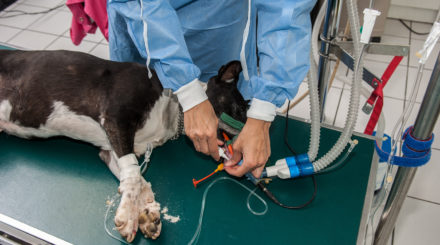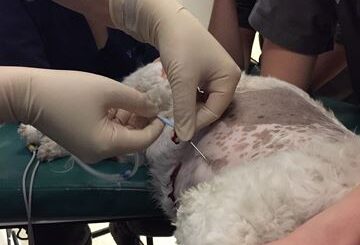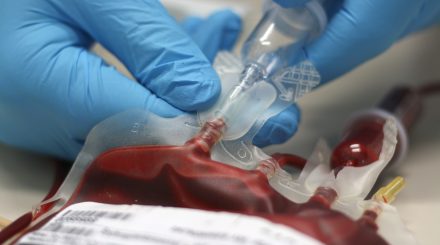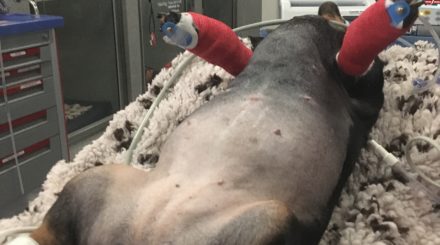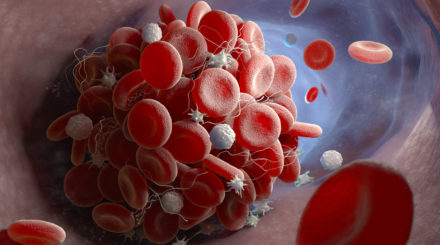Managing respiratory emergencies
During this lecture we will look at the basic presentations of respiratory difficulties, how we can recognise the different classifications and why they occur. In addition, we’ll talk about pulse…
Neonatal and paediatric emergencies
If you are looking for a refresher on normal neonatal and paediatric physiology, this webinar is for you. The care and treatment of neonates can be extremely challenging in veterinary…
Non-steroidal anti-inflammatory drugs (NSAIDs) – What Could Go Wrong?
Non-steroidal anti-inflammatory drugs (NSAIDs) are a cornerstone of pain management in veterinary medicine—but they’re not without risk. When things go wrong, the consequences can range from gastrointestinal irritation to life-threatening…
Nursing the septic patient
Recognising and reacting to the early signs and symptoms of sepsis can increase the rates of survival to discharge. Emphasis on early staging and quick initiation of treatment has become heavily emphasised with…
Pancreatitis… What the feline is new?
Pancreatitis in cats, although commonly diagnosed, still presents many diagnostic and management challenges. Accurate diagnosis of pancreatitis in cats requires the combination of history and clinical findings, diagnostic imaging, laboratory…
Pericardial disease in dogs and cats
Pericardial effusion is the most common pericardial disease in dogs and cats. The clinical presentation of patients suffering from acute and chronic pericardial effusion differs substantially. Syncope or collapse is…
Plasma products… and their various uses in practice
In this lecture we will review the various types of plasma products available in clinical practice, alongside why we should consider choosing one product over the other. This will involve…
Postoperative management following an emergency abdominal surgery
The postoperative period following an emergency gastrointestinal surgery can be very challenging. In this webinar we’ll discuss ways to optimise postoperative management and maximise your patient’s chances for a full…
Practical use of anti-thrombotics
This webinar explores the use of anti-thrombotic medication in dogs and cats including the conditions in which they are indicated, alongside the preferred medication, dose, and frequency. The use of…
Roundtable Panel Discussion ‘Mastering Caesarean Sections in Small Animal Practice’ (14/03/2025)
Caesarean sections in small animal practice are among the most demanding surgical procedures, requiring swift decision-making, careful planning, and close teamwork. This session will explore the complexities of managing these…
Roundtable Panel Discussion ‘Navigating the presenting haemoabdomen’ (10/07/25)
Join Scott Kilpatrick, Prof Jon Hall, Neus Elias and Liz Bode for an engaging live Specialist panel discussion session. Tune in as we delve into the complexities surrounding the hameoabdomen…
Tetanus: What started as a small wound!
This webinar looks at tetanus infections from pathophysiology all the way through to management. Dogs are more susceptible to tetanus than cats and so we focus on the management of…
Transfusion confusion: Blood transfusions for RVNs
The veterinary nurse plays a key role in the preparation and administration of blood products to our hospitalised patients, and caring for these patients throughout and after their transfusion. In…
Treatment and management of paracetamol toxicity in small animals
Paracetamol (acetaminophen) is a widely used and often misunderstood drug in veterinary medicine. While it can be a valuable therapeutic tool in the right context, its misuse—especially in cats—can lead…
Understanding and treating Lily Toxicity in Cats
Lilies may be beautiful, but for cats, they can be deadly. Even small exposures—such as a lick of pollen or nibble of a petal—can lead to devastating acute kidney injury….
What’s new in IMHA?
Immune‐mediated haemolytic anaemia (IMHA) is an important cause of morbidity and mortality in dogs. IMHA also occurs in cats, although less commonly. IMHA is considered secondary when it can be…


